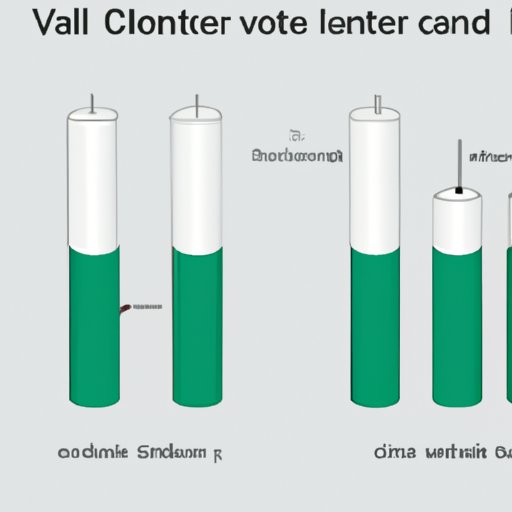
Introduction
Knowing how to calculate the volume of a cylinder is important in various fields, from engineering to physics to architecture. This guide will provide you with a step-by-step approach to calculating cylinder volume and practical examples of its applications in real-world scenarios.
Understanding Volume and Cylindrical Shapes
Volume is the amount of space occupied by an object. A cylinder is a 3D shape with a circular base, where the height and radius are the main dimensions that define its volume. Cylinders are common in real-world scenarios, such as pipes, cans, and columns.
Step-by-Step Guide to Calculating Volume of a Cylinder
The formula for calculating the volume of a cylinder is V = πr²h, where V is the volume, r is the radius, and h is the height.
To use this formula, follow these steps:
- Determine the radius (r) of the cylinder.
- Determine the height (h) of the cylinder.
- Multiply the square of the radius (r²) by the height (h).
- Multiply the result obtained in step 3 by π (pi), which is approximately 3.14.
- The final result is the volume (V) of the cylinder in cubic units.
For example, let’s calculate the volume of a cylinder with a radius of 5 cm and a height of 10 cm:
- r = 5 cm
- h = 10 cm
- r² = 25 cm²
- V = π25 cm² x 10 cm = 785.4 cm³
The most commonly used unit for measuring cylinder volume is cubic centimeters (cm³), although liters (L) or even gallons (gal) may be used in certain scenarios.
Practical Applications of Calculating Volume of a Cylinder
Calculating cylinder volume is useful in various real-world situations. For example, in a swimming pool, knowing the volume can help determine the amount of chemicals needed to maintain the water quality. In an oil tank, knowing the volume can help determine the amount of fuel available or needed. Other examples include calculating the capacity of pipes, columns, or vases.
Main Fields of Applications of Volume Calculations
Volume calculations are essential in various fields, such as engineering, physics, and architecture. In engineering, volume calculations are used to determine the capacity and flow rate of systems, such as pipelines and turbines. In physics, volume calculations are used to analyze the properties of materials and substances, such as density and pressure. In architecture, volume calculations are used to design and plan the construction of buildings and structures.
Incorporating Visual Aids
Visual aids, such as diagrams and illustrations, can simplify understanding and make the concepts clearer. In the case of calculating cylinder volume, visual aids can help visualize the 3D shape of the cylinder and the relationships between the dimensions. Visual aids can also help in understanding the units used, and how to convert them from one to another.
Mathematical Formulas Behind Calculating Volume
Behind the formula V = πr²h, there are several other mathematical formulas that explain the properties of cylinders and their volumes. For example, the surface area of a cylinder is given by 2πr² + 2πrh, where the first term represents the area of the top and bottom faces, and the second term represents the area of the lateral face. Another formula is h = V / (πr²), where h is the height of the cylinder and V is its volume.
Knowing these additional formulas can help solve more complex problems, such as determining the height of a cylinder given its volume and radius.
Common Mistakes to Avoid
One common mistake in calculating cylinder volume is forgetting to square the radius. Another mistake is using the diameter instead of the radius in the formula. To avoid these mistakes, be sure to double-check the values entered and use the correct formula. Additionally, pay attention to the units used, especially when converting from one unit to another.
Conclusion
Calculating the volume of a cylinder is essential in various fields, and it is a relatively simple process that can be done using the formula V = πr²h. However, it is essential to pay attention to the values and units used to avoid common mistakes. Visual aids and additional formulas can help understand the properties of cylinders and enhance the calculations. Knowing how to calculate cylinder volume can open up new possibilities in architecture, engineering, physics, and many other fields.




